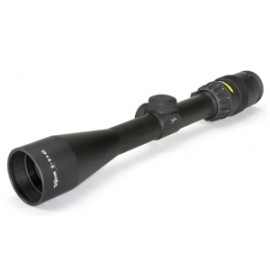Rifle Scope Advice from Sergei Shushunov
When you hunt in the mountains, you must be ready to take long-range as well as close range shots, which requires good quality riflescope. Next to your rifle itself, your most important piece of equipment for a successful hunt is your riflescope. Less expensive rifles can benefit greatly when topped by good riflescopes. Nikon, Leupold, Zeiss, Schmidt & Bender, Trijicon, Swarowski and Burris, US Optics, Nightforce are manufacturers of excellent scopes. To get started picking a scope, here are some general points to help you understand how they work and how to talk about them.
Light gathering power. There are basically two measurements that define a scope: magnification power and lens size. 10x50 indicates 10 times magnification (an object will look 10 times closer) with a 50 mm. objective lens. Bigger the objective lens transmits more light. So if you’re planning to hunt in low light conditions, such as at dawn or in evening dusk, make sure your scope’s objective lens diameter is larger than 40 mm.
Fixed or variable. All high end variable power scopes are now as reliable as fixed power. Most hunters prefer a rifle scope with variable magnification. If a scope is adjustable from 4 power to 16 power magnification and has a 50 mm objective lens it is written like this: 4-16x50. If you are aiming at a moving target, lower magnification is better because it gives you a wider field of view and it will make it easier to track the moving target. Shots in excess of 400-500 yards can be better placed with scopes using higher magnification. For a mountain hunt, your scope should have a maximum magnification power anywhere from 12 to 20.
Coatings. Be sure the scope has multicoated lenses. This tells you that each lens in the scope has coatings to reduce the loss of light, reduce glare, to provide a higher contrast image and to improve scratch resistance.
Exit pupil size. Larger exit pupil allows transmission of brighter image. It is determined by dividing Objective lens diameter by magnification. A 5?50 would then give a 10 mm exit pupil. This is the diameter of the circle of light that comes out of the exit lens. Obviously, it can be changed in variable power scopes.
Eye relief. A very important parameter, meaning how far back your eye can be from the end of the scope and still give you a full field of view. Being too close to the scope, may cause recoil to hit your eyebrow. A scope with a short eye relief should have a soft rubber end piece to give a little more protection from the recoil.
Durability. Good rifle scope must be 100% waterproof, filled with dry inert gas, such as nitrogen and be shock and scratch resistant. Falls, slides, slips and going through brush can all scratch your scope. After a fall, or good hit it is recommended to sight the scope as soon as possible.
Buy the best. To sum up, remember that a low quality scope can ruin a hunt, so buy the finest rifle scope you have the money for.
We would be happy to give you personal advice on the best scope for your needs, so feel free to e-mail me at sergeshush@gmail.com.
Happy hunting adventures!












